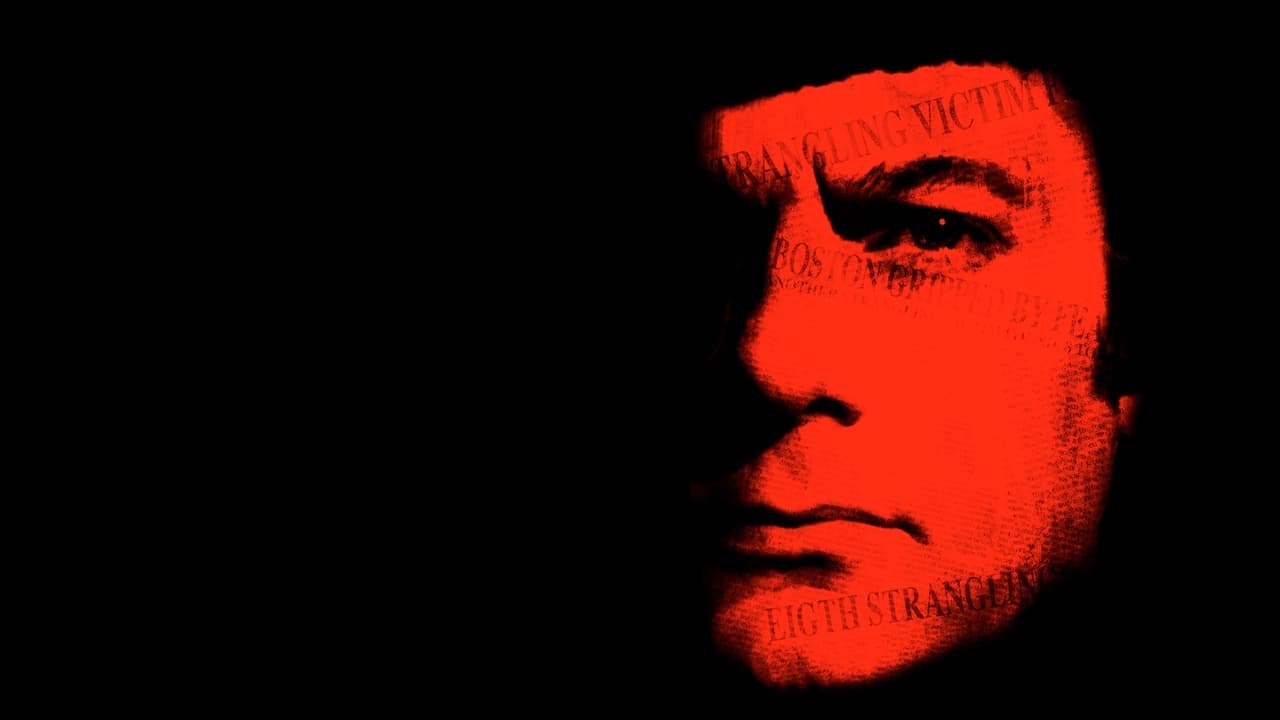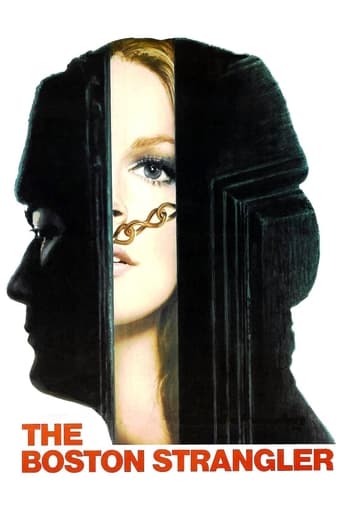



Wonderful character development!
Let's be realistic.
I was totally surprised at how great this film.You could feel your paranoia rise as the film went on and as you gradually learned the details of the real situation.
View Morea film so unique, intoxicating and bizarre that it not only demands another viewing, but is also forgivable as a satirical comedy where the jokes eventually take the back seat.
View MoreWith the invention of the 24 hour news cycle and cable news it seems like every atrocity on the face of the Earth is presented to us nonstop around the clock. When a mass shooting happens or serial killer is on the lose we hear about it constantly without relief. Growing up when there were only three major networks and people relied as much on print journalism as they did TV we never had that. When something like this occurred the story would unfold over time rather than tons of speculation and unverified tidbits coming at us fast and furious.So it was with the case of Albert DeSalvo, aka the Boston Strangler. The story was mostly regional in the Boston area at first. Once the killing was solved the story spread out across the country. Pundits didn't weigh in automatically about this, that or the other. The deepest look into what happened was put in books rather than a movie of the week. But a movie was made and it was a great depiction of events.In 1962 the city of Boston is filled with fear as a series of murders of women occur. No one feels safe and no location is safe as the women were murdered in their own homes in most cases. There was no sign of forced entry and most were sexually assaulted. To say that there was intense pressure on law enforcement to catch this killer is an understatement.The movie moves back and forth between two stories, the second developing as we get into things. On one hand we have the typical police procedural story to watch. Led by appointee John Bottomly (Henry Fonda) a task force is set up to bring together all the clues and information about the killer in the hopes of capturing him and ending his reign of terror. Things get so desperate that Bottomly allows psychic Peter Hurkos in to help the task force. But it is luck that results in the killer's apprehension.As this story unfolds we are also presented with that of Albert DeSalvo, the man who is indeed the Boston strangler. A middle aged married man with children, DeSalvo goes to work, comes home, watches TV and seems normal on the surface. While watching TV one day he tells his wife he has to leave for work. In reality he has another victim in mind. His attack goes off and he rapes the woman, being bitten by her as she tries to free herself. While running away he is apprehended by the police and eventually his story is revealed.The third act here involves the interrogation of DeSalvo and how they came to find out more about the man and his mental issues. Without a confession the evidence to convict is slim. As Bottomly questions DeSalvo it at first appears he won't succeed. Whether he can or not makes for a well thought out, stunningly portrayed performance by two great actors.When the movie was released it received solid reviews but most critics took note that much was changed from the reality of the story. Rather than praising it for being an accurate portrayal they noted it was more in the vein of a "based on real events" type film. This didn't hold back the public who went to see the movie and made it a success.The movie offered actor Tony Curtis who fought for the role one of the best parts of his life. He was able to show that he wasn't just another pretty face but a dynamite actor who had the chops to bring the character to life. At a time when many thought his career was over this revitalized it instead. Watching his performance is one of the highlights of the film.The release by Twilight Time is every bit as good as the rest of their catalog, offering a pristine version of the movie on blu-ray. In addition to the quality image on screen extras include an isolated music & effects track, audio commentary by film historians David Del Valle and Steven Peros, "Split-screen Personality" a short with William Friedkin on the film, Real Killer Fake Nose, AMC Backstory: The Boston Strangler, Fox Movietone Newsreel and the original theatrical trailers. As is always the case with their releases this has a limited run so if you are interested make a point of picking one up before they're gone.
View MoreThe Boston Strangler is on the loose and the cops are without a suspect. They throw a wide dragnet for "the peepers, the men's room queens, the exhibitionists, subway jostlers, the dirty word specialists." Atty. Gen. Brooke assigns scholarly lawyer John Bottomly (Henry Fonda) to head the fractured investigation scattered in several jurisdiction. Det. DiNatale (George Kennedy) and Det. Frank McAfee (Murray Hamilton) investigate. Suspects include gay Terence Huntley, disturbed Lewis and compulsive liar Lyonel Brumley. Dianne Cluny (Sally Kellerman) survives an attack by family man Albert DeSalvo (Tony Curtis). He is caught after trying to break into an apartment.This movie is basically split in two halves. The first half is the police investigation which I find very fascinating. They are hopelessly without a clue. In that part, even Henry Fonda isn't the star of the movie. It's the investigation and the many dead-ends that is the true star. I like the split screen in this section which give a scattered feel to the police work.The second half starts with the introduction of Tony Curtis. It becomes a lot of psycho-babble trying to dig into DeSalvo. I'm not convinced of its authenticity and I don't think it's that compelling. The second half could have continued the idea of the first half. It could have made DeSalvo less definitive as the killer. Instead there is no mystery. The audience is simply waiting for him to admit his guilt which is not in doubt. The first half is a terrific crime movie and the second half is much less compelling.
View MoreThis viewer, for one, knows that usually Hollywood productions based on true stories have to be taken with a grain of salt, that they won't exactly be 100% accurate. However, no matter if there is invention or fictionalization going on in "The Boston Strangler", it's still an absorbing, well-crafted film with an incredible cast just full of familiar faces. Much has been made of the documentary-style approach that it takes to its events, and deservedly so; only towards the end does it get more surreal, as it attempts to get into the head of the disturbed killer. Director Richard Fleischer does great work here, especially the way that he utilizes the Panavision aspect ratio and the split screen technique. Best of all is an unexpectedly potent performance by Tony Curtis as Albert DeSalvo, the man believed to be the unfortunately prolific Boston Strangler who murders almost a dozen women during the course of the film.As this serial killer goes about his business, the intense manhunt is launched, with law expert John S. Bottomly (Henry Fonda) drafted to lead a task force. Detectives such as DiNatale (George Kennedy), Soshnick (Mike Kellin), and McAfee (Murray Hamilton) pursue all possible leads, and consider *any* sort of "deviant" as a potential suspect. It isn't until the film is about half over that we finally get a proper introduction to DeSalvo, and see him in action, in the guise of his job as a furnace man, selecting victims. Eventually, he does get caught, and the final portion of the tale has Bottomly doing his hardest to get some kind of confession out of him."The Boston Strangler" is a little ahead of its time with a rather daring amount of explicitness, in terms of bare skin and violence. Fleischer dares to take his time moving from scene to scene, and creates the kind of procedural that is always fascinating for this viewer. Use of Lionel Newmans' score is also very spotty, adding to a respectable degree of realism. But it's that lengthy end portion with Bottomly attempting to get DeSalvo to open up that's the corker. Curtis really was a better actor than often given credit for, and he shows it here.The large list of people to watch for in this cast include Hurd Hatfield (in a poignant performance as a homosexual that counteracts the homophobia from the cop characters), Jeff Corey, Sally Kellerman, William Marshall, George Voskovec (in a funny turn as renowned psychic Peter Hurkos), Leora Dana, Jeanne Cooper, George Furth, William Hickey (sympathetic as a disturbed suspect), James Brolin, Dana Elcar, William Traylor, and Alex Rocco in an uncredited bit.This is good stuff and worth a look for those with an interest in true-crime stories.Eight out of 10.
View MoreThe Boston Strangler nestles nicely into a small canon of films of around about the time it was made looking at the notion of a pathological killer as an example of an immensely disturbed person, with an unbalanced psychosis, rather than a mere monster of an uncanny variety killing because it's apparently in their primal nature. Like Hitchcock's Psycho eight years before it, Richard Fleischer's The Boston Strangler is a serial killer film about such a person living locally; living normally or even, as the saying goes, "living next door". The film is a scary and unnerving ride at the best of times, an attempt at a police procedural thriller on top of a disturbing tale of a man already under and on his way further down. Like Hitchock's masterful work before it, the film takes its cue from a true to life tale; but where Psycho was, we're told, inspired by the events of a certain Ed Gein, Fleischer's work here is more an authentic retelling of a true story – a feeding off of the real case of a certain Albert DeSalvo whom molested and strangling women of varying ages during the 1960s within the titular Massachusetts city. Furthermore in addition to Psycho, the film is particularly interested in the notion of duality or the item of dual personas within somebody and while it doesn't hit the levels Psycho did in its thriller sub-genre roots, The Boston Strangler is a substantial and interesting enough piece of work by itself.The film begins with somewhat of a national celebration of some astronauts whom have returned to Earth and have been granted a parade, an item of national pride or celebration of achievement which is eerily inter-cut with a break in at an apartment which comes with a sordid murder of a woman as well. The sequence sees the film highlighting a nation's want or lust to progress scientifically, as experimentations in space travel appear to unfold with rapturous enthusiasm without realising there are certain other fields, namely human psychology, more closer to home that need just as much exploration; attention and breaking through of – the science of what's going on 'down here' highlighted as just as important as the science in trying to advance 'up there'. Several more murders happen, the film going onto document a state's ill informed reaction to such things by rounding up crooks; freaks; fetishists; ex-cons; homosexuals and other people of a generally 'ill' or unbalanced ilk. An emphasis on one of these sorts of people surely guilty of the on-going murders is established, the film's thesis coming to highlight the incorrect assumption past ideals might have resembled.The guilty party on this occasion is the late Tony Curtis' DeSalvo, a performance which has gone grossly understated as the years have rolled past, a man whom when we first observe him sits at home in a seemingly idyllic set-up with his family. His two kids play while the television is on, his wife works the kitchen over and he reads law rather than car or gun magazines like the other suspects whom were rounded up. The film bypasses most of DeSalvo's past, namely his childhood, and grants him this setup; but it is not the setup a man of DeSalvo's upbringing would have easily attained. Moreso, the film is not interested in how the killer came to be who he is, but exactly what it is that he is. Most of the murders he commits are unfolded with a split screen technique, something that shows various stages of the attack and the parties involved in the various locations those involved inhabit; that sense of distortion or a fragmented mindset via the visuals is certainly prominent, something that works well when later reveals of Albert's inability to suppress his I.D are unfolded and more than one persona raging around inside of him is explored.If the film has any kind of flailing, it's that it isn't interested in the police procedural content as much as it is the points or notions of exploration in regards to DeSalvo. George Kennedy's detective Phil DiNatale takes on the case after an entirely separate bureau is established to deal with the problem, again exploring the breakthroughs and ever-shifting actions within the field of investigation people were forced into taking so as to deal with this kind of problem: the 'straight' killer, while Henry Fonda's role as detective John Bottomly sees him partake in nothing much-bar merely tag along for the ride. These characters are archetypal, stiff and bog the film down with its having them visit one too many suspects as well as over indulge them in the drawn out documenting on future plans of action. Since it isn't as interested in them as much it is DeSalvo; the substance that comes with him and the highly effective manner in which it documents his killings, we ourselves are not as interested in them. Fleischer, feeding off of an Edward Anhalt screenplay further still feeding off of both a novel and a true to life event, directs well in the scenes where his priorities lie; the studying of DeSalvo as this monster living amidst the 'normalised' explored interestingly enough whilst the whole thing comes to climax with a harrowing self-exploratory reveal that is quite powerful.
View More